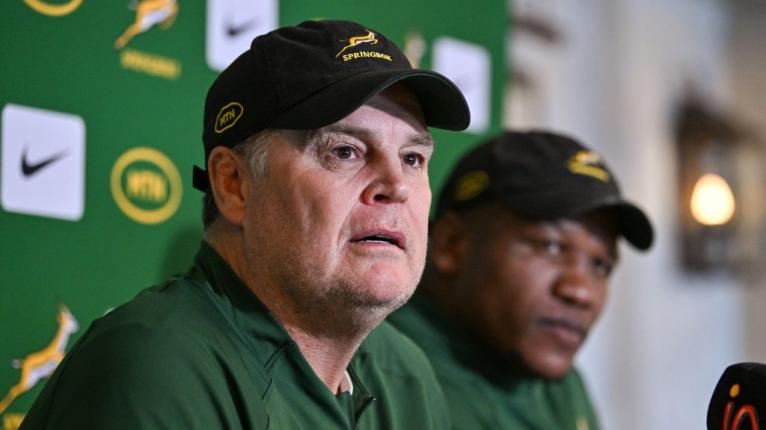The opening lyrics of Bob Dylan’s famous 1964 ditty The Times They Are A-Changin’ read rather prophetically, not to say ironically, in an age of climate change 50 years later.
Come gather ’round people/Wherever you roam
And admit that the waters/Around you have grown
And accept it that soon/You’ll be drenched to the bone
If your time to you is worth savin’/And you better start swimmin’
Or you’ll sink like a stone/For the times they are a-changin’
The same tidal wave of change is also engulfing the Rugby Championship, at least on the evidence of its latest iteration. Time was when the innovative attacking power of Australia and New Zealand dominated the championship and South Africa and Argentina struggled to keep pace. Not so anymore.

When the waters settle and a few cold hard facts trawled from the tournament float to the surface, it becomes very clear international rugby in the southern hemisphere is entering a brave new world. In this piece written after the first round had been played back in August, I observed that of the two 23-man squads representing South Africa and Argentina – both of whom won away from home versus Australia and New Zealand respectively – 19 played in the URC, 11 in the Top 14, nine in the English Premiership, six in Japan and only one at home in Argentina. Since then, the solitary ‘one’ [Puma lock Franco Molina] has signed for the Exeter Chiefs to make it a full house for the northern hemisphere.
In the last round there were only two teams who could still win the competition, and all their players now ply their trade in the north. Even double World Cup-winning coach Rassie Erasmus felt the likeness between the two nations, and foresaw a realistic chance for the Pumas to claim the silverware for the first time in their history.
“It is definitely possible, our team has shown that many things are possible when the odds are against you, and Argentina is very a similar country to us,” he said.
“We [Argentina and South Africa] always play one another at the end of the Rugby Championship, and when you play home first and then fly with the team back [home], you don’t really get the benefit of jet lag and time zones and that kind of thing.

“They get the same stress and tiredness or whatever would affect them too, so the way we try to counter that is by sending guys over there hoping to beat them with that team. We got a bonus point – we would have loved the win.
“But now we are hoping that our chances are much better, with six fresh guys in this side who didn’t play and also Eben [Etzebeth] who didn’t play a full match on that side and Siya Kolisi who would be fairly fresh.
“There is a bit of science behind it but by all means, we do believe Argentina can do it and that’s what we would have to stop.”
In the event, the six new players in the Argentine starting XV could not match Erasmus’ own six fresh guys and South Africa waltzed off with the title 48-7.
Adding the stats of the two ‘northern’ nations together, and comparing them to those of the two Super Rugby-based countries makes for some fascinating pointers on how each hemispheric ‘cluster’ approaches the game. Let’s start with ball-in-play time.

The tournament average was 34.7 minutes per game, but there was 2’ 20” more ball-in-play in matches involving New Zealand and Australia. This in turn had a pronounced impact on the scoring patterns of the four nations.

The Pumas and the Springboks tended to strike more quickly and decisively than the two Super Rugby-based sides, scoring 26% more of their tries in the first four phases of attack. Another spin-off was far greater effectiveness in the fourth quarter, when the outcomes of so many games at elite level are decided.

Greater energy in the fourth quarter was accompanied by more consistent discipline. The Pumas and Springboks came out in the black with +14 penalties in the for/against column, while the Wallabies and All Blacks dropped into the red with -14.
The overall conclusion is although the Super Rugby-based sides tend to keep the ball on the field for longer, they are generally less efficient at creating chances early in the phase count, they commit more errors leading to direct sanction, and their performance tends to drop away more steeply in the last 20 minutes of matches. On that evidence, the multiple professional competitions in the north are simple better at producing Test-quality players than Super Rugby is down south.
There were many local points of statistical interest with the general frame, offering some clues in answer to the question ‘What makes a successful international team?’. Despite having the lowest ball-in-play time [33.3 minutes] South Africa had by far the biggest share of time-in-possession at 18.4 minutes, and the Bokke were forced to make 33 fewer tackles per game than their nearest rivals. They also had by far the most dominant scrum, with an aggregate of +14 penalties at the set-piece. The next best [the All Blacks] were flatlining on zero [+0].
Those points of advantage allowed the Boks to overcome a highly un-South African goal-kicking success ratio of only 68% from 41 shots at goal – penalties and conversions combined – dead last in the tournament. Erasmus’ Boks do not keep the ball for the sake of it, and they play the game closer to source than any of their rivals. That begins with the scrum and ‘the bomb squad’. In the Rugby Championship, the Springboks won 15 scrum penalties and conceded one, all of them on their own feed.
Big Stade Rochelais tight-head prop Joel Sclavi had done a decent job of shoring the Pumas scrum up until the last two rounds, but he did not enjoy his first taste of ‘Ox’ Nche at the Estadio Único Madre de Ciudades.
At 6ft 3ins and angling in towards the hooker, Sclavi is built ideally for a nuggety 5ft 9ins strongman like Nche on the loose-head. The impact was doubled by a sprinkling of Rassie’s magic ‘science’, and the addition of a fresh Frans Malherbe to the starting front row in Mbombela.
A less charitable soul than Kiwi Ben O’Keefe would already be running towards the posts and awarding a penalty try for that scrum, along with a yellow card to one of the Pumas props. Argentina had already conceded five scrum penalties in the first 11 minutes, as Sclavi’s problems with Nche on one side were compounded by Thomas Gallo’s decision to move away from his hooker and allow Malherbe free passage down the centre of the Argentine scrum.
That try was just one of several examples of some outstanding left-to-right attacks by South Africa, with the execution of the pass performed right on the advantage line.
The Tony Brown drip-effect is clearly already becoming something of a gusher. Although it is one stat which is much harder to quantify, at the Rugby Championship both South Africa and Argentina have been playing closer to source, and much closer to the gain line than New Zealand and Australia. Both nations are closer to the cutting edge of innovation at the pointy end of the game.
Argentina achieved their best-ever result at the Rugby Championship with three wins, one against each opponent, while South Africa pressed the restart button with the addition of Brown to their coaching staff. Under Erasmus, the Boks are not satisfied to rinse and repeat the formula which won them two consecutive World Cups. Both nations are into a new four-year cycle of development with more urgency than either Australia or even New Zealand.
It is only right therefore, that a mix of South Africans and Argentines should exceed the usual crop of All Blacks in my top XV from the 2024 tournament.

Northern competition is trending ahead of the south at present, and the times they are a’ changin. Let’s leave the last word with Bob Dylan.
Come senators, congressmen/Please heed the call
Don’t stand in the doorway/Don’t block up the hall
For he that gets hurt/Will be he who has stalled
The battle outside ragin’/Will soon shake your windows
And rattle your walls/For the times they are a-changin’.


Comments
Join free and tell us what you really think!
Sign up for free